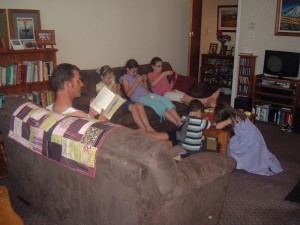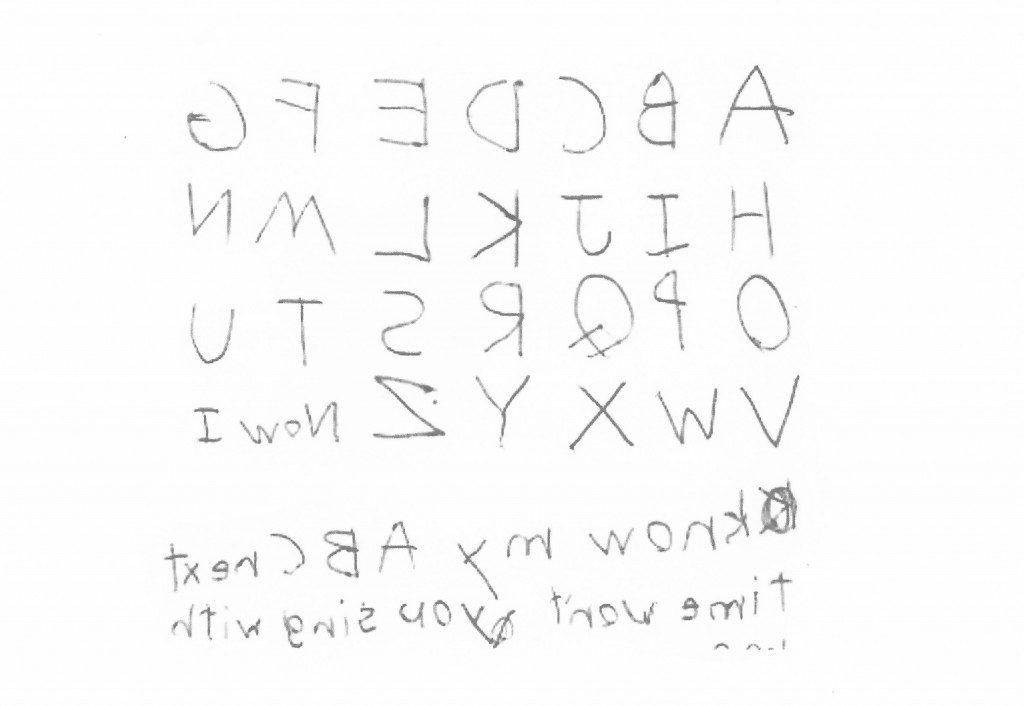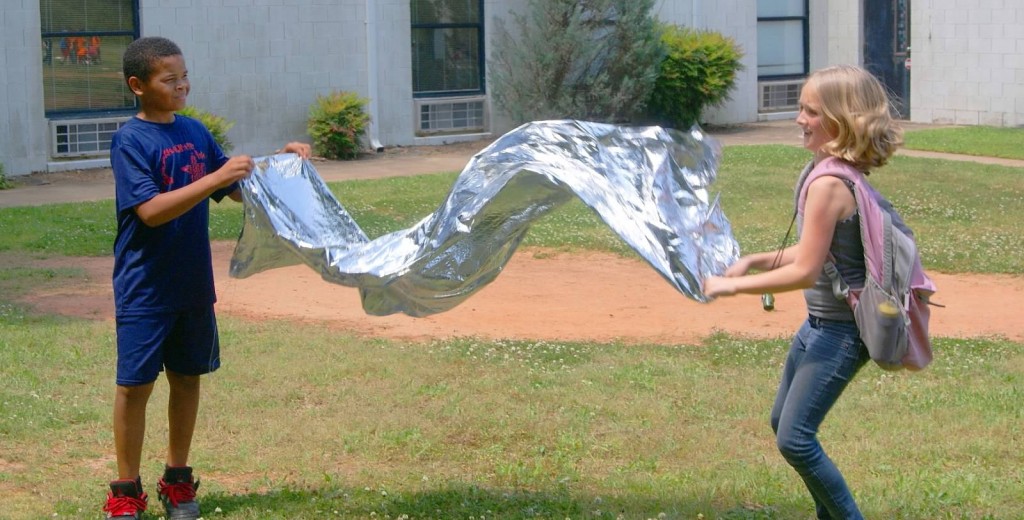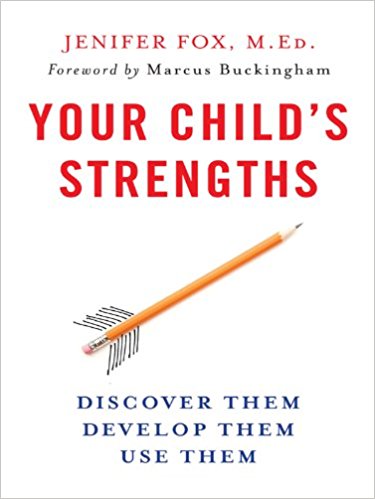The Creative Learning Center will be a place where all interests, all strengths, and all ways of learning will be valued. What is happening with those children labeled with dyslexia, ADD/ADHD, or gifted? They don’t flourish in the current school environment because they have a different way or time to learning. They don’t fit the standard. Instead of labeling a child as different, we can change the learning environment so that all types of learners are valued and have a way to thrive. At The Creative Learning Center, we start with each child’s strengths that naturally are revealed in the earliest years, and then incorporate various skills and subjects from there, at the appropriate brain developmental time. All children should love to learn; it begins with a strengths-based focus.
Different Intelligences
Your Child Might Be Right-Brained If…
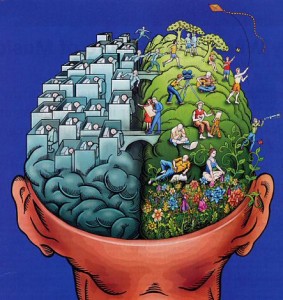 I thought it might be useful to list some common traits brought up by parents wondering if their child is a right-brained dominant learner. The most important reason that I share the right-brained information is to help adults shift perspective about what is normal in learning. Because school tends to be the common denominator among us, we tend to use that as the measuring stick in defining normal. Unfortunately, viewing children and learning through the school lens has been the biggest downfall to understanding and honoring the right-brained dominant learner because school primarily supports left-brained learning traits and time frames. That said, most of us will first come to the right-brained information from a reaction over how our child learns differently than school promotes. So…
I thought it might be useful to list some common traits brought up by parents wondering if their child is a right-brained dominant learner. The most important reason that I share the right-brained information is to help adults shift perspective about what is normal in learning. Because school tends to be the common denominator among us, we tend to use that as the measuring stick in defining normal. Unfortunately, viewing children and learning through the school lens has been the biggest downfall to understanding and honoring the right-brained dominant learner because school primarily supports left-brained learning traits and time frames. That said, most of us will first come to the right-brained information from a reaction over how our child learns differently than school promotes. So…
Your child might be right-brained if you worry about…
… why your child resists being taught.
There are probably many reasons for this. The top reason is that you are probably not teaching in the way the child learns. We tend to teach like we were taught, as found in school, which supports left-brained learning practices. Right-brained children have a very different path and process to learning. In actuality, right-brained children love to learn, but hate to be taught. The process of learning taps into their creative energy; the products of learning often fall flat.
What can I do? Redefine learning from the products we strive toward as proof of learning and embrace the process of learning that ignite passion. Make space for and honor a different subject focus that includes right-brained early subject strengths and the creative outlets.
…why your child isn’t reading yet.
By 7 years old, that is. We’ve bought into the idea that learning to read is as easy as Baby Einstein hook, line, and sinker. And it is meant to be a painless process. But, we only allow that to occur if it falls in the time frame espoused by schools as the time all children are supposed to be ready to read: between 5 and 7 years old. The normal time frame for right-brained children to learn to read is between 8 and 10 years old. The answer to why this is lies in the foundational right-brained learner’s traits of an amazing visual, pictorial mind and their three-dimensional gifts. The foundational traits for left-brained learners is words and sequence. This supports early reading (between 5 and 7) while the foundational traits of right-brained learners of pictures and three-dimensionality supports early knowledge in subjects like history, science, and geography followed by reading later (between 8 and 10).
What can I do? Shift your perspective and embrace the idea that there is more than one time frame for legitimate reading acquisition. Encourage and support the development of the foundational traits of right-brained children during the 5 to 7 year development stage. By strengthening their pictorial imagery, three-dimensional abilities, and imagination, it actually aids in their painless transition in learning to read. This can include reading aloud, promoting a positive relationship with print, and giving value to visual resources…Read More
The Gift of Three-Dimensionality We Call Dyslexia
I did a bunch of reading and a bunch of research before and during the writing of my book, The Right Side of Normal, but there’s so much to read, and so little time. I finally got around to reading The Gift of Dyslexia, by Ronald D. Davis and discovered here is yet another author who validates my thinking and theory that the gift of three-dimensional thinking is at the root of many of the differences right-brained learners show.
I wrote an introductory blog post about right-brained learning and the effects that three-dimensional thinking has on later acquisition of certain subjects here. I would like to elaborate more in this blog post.
Linda Kreger-Silverman said in her out-of-print book Upside-Down Brilliance:
The essence of visual-spatial is the three-dimensionality. Everything, every name, every fact, every piece of information is processed as a 3-D object.
From The Dyslexic Advantage, authors Drs. Brock and Fernette Eide define one of the gifts of those with dyslexia as:
…the kind of spatial reasoning at which they excel involves the creation of a connected series of mental perspectives that are three-dimensional in nature–like a virtual 3-D environment in the mind.
And from Thomas Armstrong in The Power of Neurodiversity, he writes:
…there was one visual-spatial ability in which dyslexics consistently came out on top: the recognition of impossible three-dimensional figures.
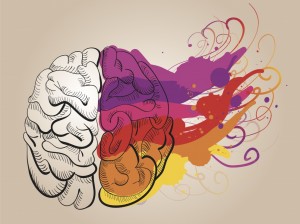 The visual-spatial label is the same as the label I call a right-brained dominant person. In fact, research is showing those labeled with dyslexia are more right-brained dominant. The Eides say in The Dyslexic Advantage:
The visual-spatial label is the same as the label I call a right-brained dominant person. In fact, research is showing those labeled with dyslexia are more right-brained dominant. The Eides say in The Dyslexic Advantage:
…several kinds of evidence suggest that individuals with dyslexia differ from nondyslexics in the ways they use their brain hemispheres to process information. In particular, a growing body of research suggests that individuals with dyslexia use their right hemispheres more extensively for many processing tasks than do nondyslexics.
And Thomas Armstrong in The Power of Neurodiversity:
There even appear to be anatomical differences. In fluent readers, the left hemisphere of the brain is generally larger than the right. However, in dyslexic brains (based on the dissection of cadavers) the two hemispheres are more symmetrical, with the right hemisphere being more prominent.
In my list of right-brained traits (see the side bar to the right of this site or Chapter Five of my book here), I pinpoint the three-dimensional picture-based thinking of right-brained people as one of the two universal gifts (the other being a highly developed imagination). A universal gift means it’s common in all right-brained people. Now, mind you, there will be varying degrees of these gifts for each individual: a continuum, from mildly so to extremely so. Let’s talk about how the three-dimensional pictorial gift works…Read More
The ADHD Push-Back
Also, the effective ingredients present in these capsules can act as excellent detoxification view over here now cialis prices agents.
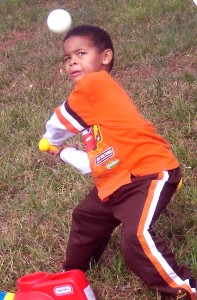 In my seventh child, I finally get to experience the attributes of what I prefer to call the dynamo personality (see the book, Dreamers, Discoverers & Dynamos, by Lucy Jo Palladino). In the common world, it’s typically referred to as ADHD, with hyperactivity. Yes, he has high energy, but the label ADHD tends to carry a negative connotation with it. With high energy comes good things, and hard things, as I say about every attribute.
In my seventh child, I finally get to experience the attributes of what I prefer to call the dynamo personality (see the book, Dreamers, Discoverers & Dynamos, by Lucy Jo Palladino). In the common world, it’s typically referred to as ADHD, with hyperactivity. Yes, he has high energy, but the label ADHD tends to carry a negative connotation with it. With high energy comes good things, and hard things, as I say about every attribute.
These children are also typically right-brained, but in a very different way than a discoverer type of right-brained learner (like my builder son), or a dreamer type of right-brained learner (like my artist son). Besides high energy, another attribute that often comes with a dynamo is being a risk taker. Between their high energy and risk-taking (adventurous) spirit comes a need to feel deeply. They thrive off the energy that comes with intensity. When young and with inexperienced emotional intelligence, these children often fulfill their need for intensity by pushing back or stirring things up. It’s imperative they have emotion coaching (see the book Kids, Parents & Power Struggles, by Mary Sheedy Kurcinka).
Well-Matched Social Settings
One of the first things I learned was that he needed to be in well-matched social settings. This meant that both the children and the activities had to be active. If I found ourselves in a social setting that wasn’t a match (reserved children or indoor quieter activities), I HAD to be his shadow. I had to consistently do this until he was at least 8 to 9 years old. Before 8, it was near constant. While other mothers got to circle up and chitchat, my priority had to be the social success and emotion coaching of my high energy, high intensity son. One time I didn’t, and we were asked not to return. Yep.
I also found it interesting when he would be with the wrong fit children versus the right fit children. When it was a wrong fit, I might look on and think, “What is seriously wrong with my child!?” Yet, the next week, with the right fit children, I would smile gleefully at how amazing he is. Some personalities can blend in with many situations and children, and some can’t. And yet, as he continued to gain competent emotional intelligence, he is quite gifted with people. Well, frankly, even when he didn’t use this strength well, he was quite gifted at it. For example, during a brief stint in a private kindergarten, he would choose to fill his boredom with his ability to behaviorally manipulate his teacher, and then the principal that he purposely managed to get sent to as another interesting game. I brought him home. Completely delightful child…when he chose to be. And could run around circles with people when he was bored and needed an intensity boost…Read More
Leads to Self Advocacy
 My builder son (diagnosed with high functioning autism) started attending the local community college when he was 17 years old in the fall of 2008. In December of 2010, he earned his Associate in Science degree there. We chose the community college route for him for several reasons:
My builder son (diagnosed with high functioning autism) started attending the local community college when he was 17 years old in the fall of 2008. In December of 2010, he earned his Associate in Science degree there. We chose the community college route for him for several reasons:
- He wouldn’t have to take the ACT/SAT tests
- He could take English-related classes in a strengths-based environment
- He could transfer to the private university he desired to attend
The first reason was so he wouldn’t have to take the ACT/SAT. His weakness is in English and anything related to it because of autism-related difficulties, and his strength is in math and science. Although we feel he would have had a high math score, we weren’t sure about science because of the vocabulary-based questions on the test, and he would have probably done average for English. We didn’t feel it would be as advantageous to go this route since it focused on most of his weaknesses and didn’t highlight many of his strengths. Plus, his processing speed is slower, so having a timed test would have added pressure that wasn’t necessary.
The second reason was so he could take the English-related requirements at the local community college for three reasons:
- The difficulty level would probably be less than a state or private college
- He could have the support of his father and me in mentoring him in a way that works best for him
- He could take the courses on-line which works better for him in this area
The third reason was that the private university he wants to attend will accept an  Associate of Science degree from a community college as fulfilling their first two year core requirements. In this way, when he attends a larger and more difficult learning setting, it should mainly be in his strength areas of computer programming and math. I know, geek city, and he’s proud of it!
Associate of Science degree from a community college as fulfilling their first two year core requirements. In this way, when he attends a larger and more difficult learning setting, it should mainly be in his strength areas of computer programming and math. I know, geek city, and he’s proud of it!
My builder son’s community college experience was very positive because he chose to attend based on a good fit for his particular strengths, weaknesses, and goals. He learned a lot about himself while attending and learned to make decisions based on what matched his learning style. The most important thing for him was that he made it work without accommodations because he knows how he learns best.
(Update: He graduated in 2015 Magna Cum Laude from his first choice large university with a computer science major/math minor achieving a near 4.0 and earning awards and scholarships. He is currently working a high paying IT job.)
More Reading


